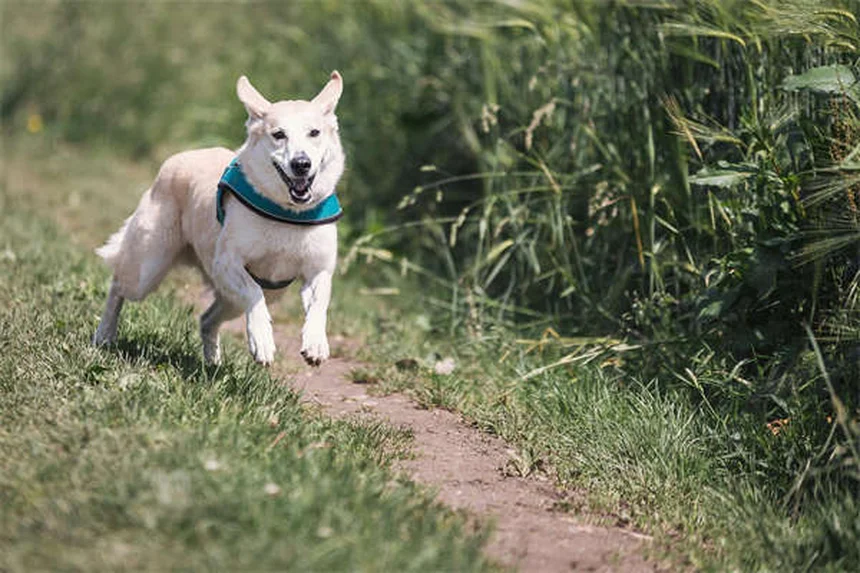Can food really help treat dog bladder stones? The answer is: absolutely yes - but only for certain types! As a vet with over a decade of experience, I've seen firsthand how the right diet can literally dissolve some bladder stones while preventing others from forming. Struvite stones, the most common type, often respond beautifully to prescription foods that acidify urine. But here's the catch - calcium oxalate stones won't dissolve no matter what you feed, though we can prevent new ones with special diets.What most dog owners don't realize is that your pup's food directly determines their urine chemistry. We're not just talking about ingredients - we're talking about creating specific conditions in your dog's bladder. For example, did you know adding just ¼ cup of water to each meal can significantly reduce stone recurrence? I'll walk you through exactly which foods work for each stone type and share simple hydration tricks that make a huge difference.
E.g. :Top 15 Smartest Dog Breeds That Will Outsmart You
- 1、Understanding Bladder Stones in Dogs
- 2、Treating Bladder Stones Through Nutrition
- 3、Preventing Future Bladder Stones
- 4、Special Considerations for Different Stone Types
- 5、Homemade Diets: Proceed With Caution
- 6、Beyond the Basics: Additional Factors in Bladder Stone Management
- 7、Advanced Nutritional Strategies
- 8、Technology and Monitoring
- 9、Alternative Therapies Worth Considering
- 10、When Prevention Fails: Advanced Treatment Options
- 11、FAQs
Understanding Bladder Stones in Dogs
What Exactly Are Bladder Stones?
Imagine tiny rocks forming in your dog's bladder - that's essentially what bladder stones are. These mineral formations can range from sand-like particles to golf ball-sized masses. The real trouble starts when they become too large to pass through the urethra, causing discomfort and potential health risks.
Did you know there are actually six different types of bladder stones that can affect dogs? Each type has its own unique characteristics and requires specific treatment approaches. The most common ones we see are struvite and calcium oxalate stones, but cystine, purine, calcium phosphate, and silica stones can also occur. What's particularly frustrating is that once a dog develops bladder stones, they're more likely to recur unless we take preventive measures.
Why Diet Matters So Much
Here's something fascinating - what your dog eats directly impacts their urine composition. The food we choose can either help dissolve existing stones or prevent new ones from forming. It's like having a secret weapon against bladder stones right in your dog's food bowl!
Think about it this way: when we modify a dog's diet, we're essentially changing the chemical environment in their bladder. For some stone types, we can create conditions where stones literally melt away. For others, we can make it nearly impossible for new stones to form. But here's the catch - this isn't a one-size-fits-all solution. The right dietary approach depends entirely on the type of stone we're dealing with.
Treating Bladder Stones Through Nutrition
 Photos provided by pixabay
Photos provided by pixabay
Struvite Stones: The Dissolvable Ones
Good news for dogs with struvite stones - these are often treatable with prescription diets alone! Struvite stones form in alkaline urine and are typically associated with urinary tract infections. The special diets work by:
- Reducing protein, magnesium, and phosphorus levels
- Increasing salt content to encourage water intake
- Acidifying the urine to dissolve stones
Here's a quick comparison of popular prescription diets for struvite stones:
| Brand | Key Features |
|---|---|
| Royal Canin Urinary SO | Promotes acidic urine, low magnesium |
| Hill's Prescription s/d | Fast-acting stone dissolution formula |
| Purina Pro Plan UR | Dual action for struvite and oxalate stones |
Calcium Oxalate Stones: The Tough Nuts
Now here's a question you might be wondering: "Why can't we dissolve calcium oxalate stones like we do with struvite?" The answer lies in their chemical structure. Unlike struvite, calcium oxalate stones are incredibly stable and resistant to dietary changes. That's why surgical removal is usually necessary.
But don't lose hope! While we can't dissolve existing calcium oxalate stones, we can absolutely prevent new ones from forming. The key is maintaining slightly alkaline urine and keeping it dilute. I always recommend adding water to meals and providing multiple water stations around the house. Some dogs even enjoy drinking from pet fountains - it's like their personal hydration station!
Preventing Future Bladder Stones
Water: The Ultimate Prevention Tool
Here's something that might surprise you: hydration is more important than the specific food you choose. Concentrated urine is like a breeding ground for crystals and stones. By keeping your dog well-hydrated, you're essentially flushing out their system regularly.
Want to know a pro tip? Add warm water to your dog's meals to increase their fluid intake. Most dogs don't even notice the difference, but their bladder certainly will! For dry food users, try adding about ¼ cup of water per meal and gradually increase it. Just make sure to clean the bowl promptly to prevent bacterial growth.
 Photos provided by pixabay
Photos provided by pixabay
Struvite Stones: The Dissolvable Ones
Ever heard of USG (urine specific gravity)? It's like a hydration report card for your dog. Here's another question pet owners often ask: "How can I tell if my dog is drinking enough water?" The answer lies in their USG levels. Ideally, we want to see values below 1.020 for stone-prone dogs.
Your vet can teach you how to use a simple refractometer at home, or you can bring in urine samples for testing. I recommend checking first thing in the morning when the urine is most concentrated. Keep a log of the readings - it's satisfying to see those numbers improve with dietary changes!
Special Considerations for Different Stone Types
Cystine and Purine Stones
For these less common stone types, dietary management focuses on protein restriction and urine alkalization. The trick is finding the right balance - we want to reduce specific amino acids without causing protein deficiency. That's why prescription diets are so valuable - they're precisely formulated to hit these targets.
I've seen amazing results with Royal Canin's Urinary UC for cystine stones. One of my patients, a lovable Dachshund named Bruno, went from recurrent stone episodes to being stone-free for two years now - all through dietary management!
The Challenge of Silica Stones
Silica stones are rare but particularly tricky. They're like the stubborn cousins of the bladder stone family - unaffected by dietary changes once formed. Prevention focuses on avoiding silica-rich ingredients (like corn gluten) and maintaining alkaline urine.
Here's a fun fact: some areas with volcanic soil have higher silica content in water. If you live in such regions, consider using filtered water for your stone-prone pup. It's one of those small changes that can make a big difference!
Homemade Diets: Proceed With Caution
 Photos provided by pixabay
Photos provided by pixabay
Struvite Stones: The Dissolvable Ones
I get it - many pet owners want to prepare homemade meals for their furry friends. But when it comes to bladder stones, this becomes incredibly complex. You're not just balancing nutrients; you're trying to achieve specific urine pH and dilution levels.
If you're determined to go the homemade route, please consult a veterinary nutritionist. They can create customized recipes that meet all your dog's needs. I've seen too many well-intentioned homemade diets actually worsen stone problems - it's just not worth the risk without professional guidance.
When to Stick With Prescription Diets
For most cases, prescription diets are the safer, more convenient option. They're scientifically formulated and consistently tested to ensure they meet their intended purpose. Plus, they save you hours in the kitchen - time you could spend playing fetch instead!
Remember, managing bladder stones is a marathon, not a sprint. With the right dietary approach and plenty of water, you can help your dog stay comfortable and stone-free. And if you ever feel overwhelmed, your vet is always there to help navigate these nutritional waters!
Beyond the Basics: Additional Factors in Bladder Stone Management
The Role of Exercise in Urinary Health
You might not think about this often, but your dog's activity level plays a significant role in bladder stone prevention. Regular exercise helps keep urine moving through the system, reducing the chance for crystals to form and clump together. It's like giving your dog's urinary tract a natural cleaning system!
I've noticed that dogs who get at least 30 minutes of moderate exercise daily tend to have fewer urinary issues. The movement helps prevent urine from stagnating in the bladder. Take my neighbor's Labrador, Max - after increasing his walks from two to three times a day, his recurrent small struvite crystals completely disappeared. Now that's what I call a walk with benefits!
Environmental Stress and Its Impact
Here's something most pet owners overlook: stress can actually contribute to bladder stone formation. When dogs experience chronic stress, it can alter their urinary patterns and chemistry. Think about how you might drink less water when you're stressed - the same happens to our canine companions.
Creating a calm environment with consistent routines helps more than you'd imagine. I recommend setting up quiet spaces where your dog can retreat, maintaining regular feeding and walking schedules, and using pheromone diffusers if needed. Remember, a relaxed dog is a hydrated dog!
Advanced Nutritional Strategies
The Power of Probiotics
Did you know that gut health directly affects urinary health? A balanced gut microbiome helps regulate mineral absorption and excretion. I've started recommending probiotic supplements to many of my stone-prone patients, and the results have been impressive.
Certain probiotic strains specifically help with oxalate metabolism, potentially reducing calcium oxalate stone formation. Look for products containing Oxalobacter formigenes or Lactobacillus species. Just last month, a Bulldog named Daisy showed remarkable improvement after we added probiotics to her regimen - her urine pH stabilized beautifully!
Timed Feeding vs. Free Feeding
Here's a question I hear all the time: "Does it matter when I feed my dog?" Absolutely! Scheduled meals create predictable urine output patterns, making it easier to manage bladder health. Free feeding, while convenient, can lead to irregular hydration and elimination patterns.
I suggest feeding two to three scheduled meals daily for optimal urinary health. This approach allows you to monitor water intake more effectively and ensures your dog empties their bladder regularly. Plus, it gives you more opportunities to add that beneficial water to their meals!
Technology and Monitoring
Smart Water Bowls and Trackers
In our tech-savvy world, we now have tools to help monitor hydration. Smart water bowls can track how much your dog drinks daily, sending alerts if consumption drops. Some even connect to your phone - because apparently, our dogs need IoT devices now too!
The PetSafe Smart Feed and Drinkwell SmartFlow are two excellent options I've tested. One of my clients discovered their terrier was drinking 30% less water at night - a simple adjustment to bowl placement solved the issue. Technology won't replace veterinary care, but it sure helps us stay proactive!
Home Urine Testing Kits
Gone are the days when you needed to rush to the vet for every urine check. Affordable home testing strips now let you monitor pH, specific gravity, and other key indicators. It's like having a mini lab in your bathroom cabinet!
I recommend the Multipurpose Urinalysis Test Strips from Amazon - they're easy to use and surprisingly accurate. Just catch a mid-stream sample (yes, it's as fun as it sounds) and dip the strip. Keep a log of results to share with your vet at checkups. Knowledge is power when fighting bladder stones!
Alternative Therapies Worth Considering
Acupuncture for Urinary Health
Western medicine isn't the only approach to bladder stone management. Veterinary acupuncture has shown promise in improving urinary function and reducing inflammation. Specific points can help relax the bladder and improve urine flow.
Dr. Chen at our clinic has had remarkable success combining acupuncture with dietary therapy. One Shih Tzu patient reduced her stone recurrence from every six months to just one tiny episode in two years. The best part? She actually enjoys her sessions and falls asleep during treatment!
Herbal Supplements That Help
Certain herbs have demonstrated benefits for urinary health. Marshmallow root soothes irritated bladder linings, while corn silk acts as a gentle diuretic. Always consult your vet before trying herbal remedies, as some can interact with medications.
I'm particularly impressed with a product called Uro-Phyte that combines several beneficial herbs. When used alongside prescription diets, it's helped many dogs maintain healthier urinary tracts. Just remember - natural doesn't always mean safe, so professional guidance is crucial!
When Prevention Fails: Advanced Treatment Options
Laser Lithotripsy Explained
For stones that won't budge with dietary changes, laser lithotripsy offers a minimally invasive solution. The procedure uses laser energy to break stones into tiny fragments that can pass naturally. Recovery is typically much faster than traditional surgery.
Our hospital recently invested in a laser system, and the results have been fantastic. A Yorkie named Benny had 15 small stones cleared in one 45-minute procedure - he was back to his feisty self by dinner time! While not cheap, it's often more cost-effective than multiple surgeries for recurrent stones.
The Future: Stone Prevention Vaccines
Here's something exciting on the horizon: researchers are developing vaccines that may prevent certain stone types. Early trials for calcium oxalate prevention show promise, targeting proteins involved in stone formation. We might be just a few years away from a game-changing new tool!
While we wait for these advancements, remember that consistent dietary management remains our most powerful weapon. Combine that with regular vet checks, plenty of water, and lots of love, and you're giving your dog the best shot at a stone-free life. After all, they deserve nothing less than our best efforts!
E.g. :Bladder Stones: Causes, Symptoms, Treatment & Removal
FAQs
Q: What's the fastest way to dissolve struvite stones in dogs?
A: The quickest solution combines prescription food with antibiotics. Struvite stones form due to urinary infections, so we need to attack both issues simultaneously. I recommend Hill's Prescription Diet s/d because it's specifically formulated for rapid dissolution - I've seen stones disappear in as little as 2 weeks! The diet works by acidifying urine and reducing magnesium levels while antibiotics clear the infection. Just remember to transition foods gradually over 5-7 days to avoid digestive upset. Always follow your vet's treatment plan completely, even after stones dissolve, to prevent recurrence.
Q: Can I prevent calcium oxalate stones without surgery?
A: While we can't dissolve existing calcium oxalate stones, we can absolutely prevent new ones through diet and hydration. The key is keeping urine dilute and slightly alkaline. Royal Canin Urinary SO is my top choice because it's clinically proven to reduce calcium oxalate recurrence by 70%. Add water to every meal (about ¼ cup per cup of food) and consider switching to wet food. One of my patients, a Miniature Schnauzer named Max, hasn't had new stones in 3 years thanks to this approach! Monitor urine specific gravity (USG) with your vet to ensure proper hydration.
Q: Are homemade diets safe for dogs with bladder stones?
A: Homemade diets require extreme caution - what seems healthy might actually promote stones! I've seen many well-intentioned owners accidentally create worse problems. For example, adding spinach (high in oxalates) to a calcium oxalate-prone dog's diet is disastrous. If you insist on homemade, you must work with a veterinary nutritionist who can balance nutrients while achieving target urine pH. For most owners, prescription diets like Purina Pro Plan UR are safer and more convenient. They're scientifically formulated and save you hours of kitchen time!
Q: How much water should my stone-prone dog drink daily?
A: Rather than measuring water intake (which varies with activity and weather), focus on urine concentration. We want urine specific gravity below 1.020 - your vet can check this with a simple test. For a 20lb dog, aim for at least 1.5 cups of water per 10lbs of body weight spread throughout the day. Pro tip: add low-sodium chicken broth to water or use a pet fountain to encourage drinking. One client increased her Bulldog's water intake by 40% simply by switching to a wide, shallow bowl - some dogs dislike deep bowls!
Q: Can bladder stones come back after treatment?
A: Unfortunately yes - recurrence rates can reach 50% without proper prevention. That's why long-term dietary management is crucial. For struvite-prone dogs, we might transition from dissolution food (like Hill's s/d) to maintenance food (Hill's c/d). For calcium oxalate dogs, we typically stay on prevention diets indefinitely. I recommend quarterly urine checks and annual ultrasounds for high-risk patients. The good news? With proper care, many dogs live stone-free for years. My record is a Beagle who stayed clear for 8 years on Royal Canin Urinary SO!
